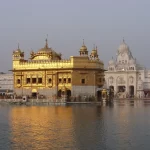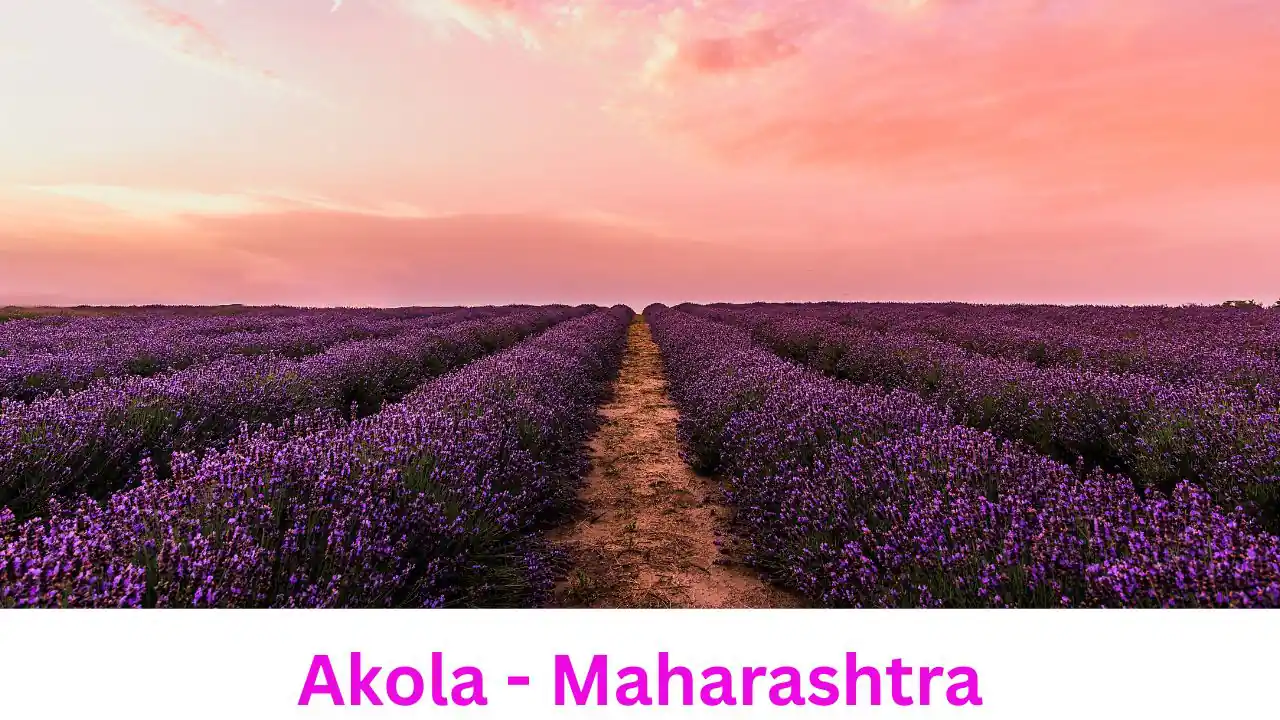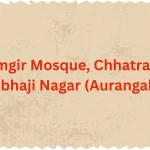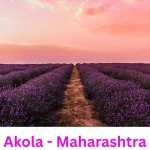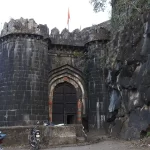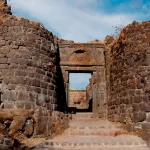Ready to explore Akola? Share your travel plans in the comments or tag us on social media for personalised tips!
🔴 Brief Introduction:
Akola – Where Heritage Meets Modernity
“From Cotton Fields to Forts: Akola’s Untold Stories Await Your Discovery”
Nestled in Maharashtra’s Vidarbha region, Akola is a city that whispers tales of empires, thrives on cotton, and welcomes travellers with open arms. Though often overshadowed by Mumbai or Nagpur, Akola’s charm lies in its authenticity — a blend of ancient forts, bustling markets, and agricultural prowess. Let’s dive into a journey through time and terrain, uncovering why this city deserves a spot on your travel radar.
Akola: Maharashtra’s Historical and Agricultural Heartland
🟢 Detailed Introduction:
Nestled in Maharashtra’s Vidarbha region, Akola is a city steeped in history, agrarian prosperity, and cultural diversity. Often dubbed the “Cotton City” for its pivotal role in India’s cotton trade, Akola blends ancient heritage with modern development. This detailed introduction explores its historical roots, geographical significance, demographic fabric, economic backbone, and cultural vibrancy, offering a comprehensive portrait of this underrated gem.
🔘 Etymology and Historical Legacy
The name “Akola” traces its origins to the Marathi word Akol, meaning “boundary” or “administrative centre”, reflecting its historical role as a regional hub. Local traditions attribute the name to Maharaja Akolsingh, a legendary ruler of the area. Akola’s history spans millennia, with mentions in the Mahabharata as part of the Vidarbha kingdom and later as a key region under the Mauryan and Satavahana empires.
During the medieval era, it witnessed Muslim rule under Alauddin Khalji and the Bahmani Sultanate before becoming a Mughal stronghold under Aurangzeb. Post-independence, Akola emerged as a critical administrative centre in Maharashtra, cementing its place in India’s political landscape.
🔘 Geographical and Climatic Profile
Situated on the banks of the Morna River, Akola lies in the Tapti River valley, approximately 580 km east of Mumbai and 250 km west of Nagpur. Its coordinates (20.7°N, 77.0°E) place it near the Tropic of Cancer, contributing to its tropical savanna climate. Summers are scorching, with temperatures soaring to 47.8°C, while winters are mild, occasionally dipping to 2.2°C. Monsoons (June–September) bring 750–800 mm of rainfall, vital for its agrarian economy. The city’s elevation ranges from 287 to 324 meters, offering a mix of plains and isolated hills.
Also Read
Ajinkyatara Fort, Maharashtra: A Journey Through Time and Heritage
🔘 Demographics and Social Fabric
As of 2025, Akola’s population is estimated at 621,000, with a district-wide projection of 2.07 million . The 2011 census recorded a literacy rate of 88.05%, surpassing the national average, with urban literacy reaching 91.23%. Hindus form 61% of the population, followed by Muslims (19.7%) and Buddhists (18.1%).
The sex ratio stands at 946 females per 1,000 males, reflecting gradual improvements in gender equity. Rural areas dominate (60.32% of the population), though urbanisation is accelerating, driven by educational and industrial opportunities.
🔘 Economic Backbone: Agriculture and Industry
Akola is Maharashtra’s cotton powerhouse, contributing 70% of the state’s production. The fertile plains support crops like soybeans, sorghum, and pulses, though irrigation remains limited to 15% of farmland. The Maharashtra Industrial Development Corporation (MIDC) zones host cotton ginning, oil processing, and textile mills, while thermal power plants like Paras bolster energy infrastructure. The city’s markets, such as Tilak Road, thrive on cotton auctions and handicrafts like terracotta and handloom textiles.
🔘 Cultural Vibrancy and Festivals
Akola’s cultural tapestry is woven from Hindu, Muslim, and Buddhist traditions. The Raj Rajeshwar Temple, dedicated to Lord Shiva, draws pilgrims during Shravan month, while the Salasar Balaji Temple attracts Hanuman devotees. Festivals like Ganesh Chaturthi, Diwali, and Eid are celebrated with fervour, uniting communities. Local cuisine, including Misal Pav and Bhakri-Thecha, reflects Marathi flavours, while street markets buzz with brassware and spices.
🔘 Architectural and Natural Landmarks
Historical forts dominate Akola’s landscape. The 15th-century Balapur Fort, built by Aurangzeb’s son, showcases Mughal architecture, while the Narnala Fort complex (10th century) offers panoramic views of the Satpura Range. The Katepurna Wildlife Sanctuary shelters rare species like four-horned antelopes, and the Kapshi Lake, a British-era relic, is a serene spot for birdwatching. Spiritual sites like the Om Shri Baara Jyotirlinga Shiv Mandir add to the city’s allure.
🔘 Education and Governance
Akola is an educational hub, home to institutions like Dr. Panjabrao Deshmukh Krishi Vidyapeeth (agricultural studies) and colleges affiliated with Sant Gadge Baba Amravati University. Governed by the Akola Municipal Corporation, the city operates under a Mayor-Council system, with District Collector Nima Arora (IAS) overseeing administrative functions. The police subdivision includes eight stations, ensuring law and order in this rapidly growing city.
🔘 Connectivity and Tourism
Akola’s strategic location on NH-161 (formerly NH-6) and its rail junction status make it accessible from Mumbai (10-hour drive) and Nagpur (4.5-hour drive). The nearest airport, Dr. Babasaheb Ambedkar International Airport in Nagpur, connects it to major cities. Tourist itineraries often include Shegaon’s Anand Sagar, a spiritual-recreational complex, and the Lord Mahadeo Cave for meditation. Winter (October–February) is ideal for exploring its forts and sanctuaries.
🔘 Environmental and Urban Development
Ranked 34th in India’s National Clean Air City initiative, Akola prioritises sustainable growth. Urban expansion since 2016 has increased its municipal area to 124 km², accommodating a growing population. Projects like the Railway Police subdivision and MIDC industrial zones aim to balance economic progress with ecological preservation.
🔘 Notable Personalities and Legacy
Akola has nurtured luminaries like Dr. Vijay P. Bhatkar (father of India’s PARAM supercomputers), classical singer Vasantrao Deshpande, and BJP leader Sanjay Dhotre. Its legacy as a cultural and intellectual melting pot continues to inspire, blending tradition with modernity.

Discover Akola – Maharashtra’s Hidden Gem of History, Culture, and Cotton
🟣 Section Breakdown
1. Historical Tapestry: From Mahabharata-era mentions to British colonial rule.
2. Architectural Marvels: Forts, temples, and Mughal influences.
3. Cultural Mosaic: Festivals, food, and Marathi traditions.
4. Travel Essentials: Climate, distances from major cities, and itineraries.
5. Local Life: Markets, handicrafts, and agrarian economy.
🟠 Detailed Section Breakdown: Akola’s Multifaceted Identity
⭕ The Historical Crossroads
Akola’s roots trace back to the legendary kingdom of Vidarbha, referenced in the Mahabharata. Over centuries, it became a strategic hub for dynasties like the Bahmani Sultanate, Mughals, and Marathas. The Battle of Argaon (1803), fought here during the Second Anglo-Maratha War, marked its significance in India’s colonial struggle. Post-independence, Akola emerged as a key administrative centre in Maharashtra, balancing its agrarian legacy with urban growth.
⭕ The Cotton Capital
Dubbed the “Cotton City”, Akola’s economy thrives on agriculture, contributing 70% of Maharashtra’s cotton production. Farmers in talukas like Balapur and Murtijapur rely on the Morna River’s waters, while textile mills dot the landscape. A local farmer, Rajesh Patil, shares: “Our cotton isn’t just a crop—it’s our pride. Every harvest feels like a festival”.
⭕ Architectural Splendours
Akola’s skyline is dotted with historical gems:
✔ Akola Fort: Built during Aurangzeb’s reign, its robust Mughal architecture features massive gates and underground passages.
✔ Narnala Fort: A trio of forts (Jafarabad, Narnala, Teliagarh) showcasing Hindu-Islamic fusion design.
✔ Raj Rajeshwar Temple: A 12th-century Shiva temple with intricate carvings, attracting pilgrims and history buffs alike.
⭕ Cultural Vibrancy
Festivals like Ganesh Chaturthi and Eid unite Akola’s diverse populace. The city’s Marathi-speaking majority coexists with Muslim and Buddhist communities, reflected in its 61% Hindu, 20% Muslim, and 18% Buddhist demographics. During Diwali, markets like Tilak Road glow with lanterns and Mithai (Sweets).
⭕ Climate & Geography
Akola endures a Tropical Savannah Climate, with summers hitting 47.8°C and winters dipping to 2.2°C. Monsoons (June–September) bring 750–800 mm rainfall, revitalising its cotton fields.
Pro tip: Visit between October–February for pleasant weather.
⭕ Connectivity & Distances
⦿ Mumbai: 565 km (10-hour drive via NH161).
⦿ Nagpur: 250 km (4.5-hour drive).
⦿ Hyderabad: 450 km (8-hour drive).
⦿ Nearest Airport: Nagpur’s Dr. Babasaheb Ambedkar International Airport (3 hours away).
✅︎ Granular Section Breakdown
➨ History & Architecture
⦿ Ancient Roots: Part of the Berar Province under the Mauryas and Satavahanas.
⦿ Medieval Era: Fortified under Alauddin Khalji and later the Nizams of Hyderabad.
⦿ Impact: Became a British administrative hub post-1853, boosting rail infrastructure.
➨ Talukas & Demographics
Akola District comprises 7 talukas: Akola, Akot, Balapur, Murtijapur, Telhara, Barshitakli, and Patur. With a population of 1.8 million, it boasts an 88% literacy rate and a sex ratio of 946 females per 1,000 males.
➤ Economy & Notable People
➡ Key Crops: Cotton, soybean, sorghum.
➡ Notable Figures:
⦿ Dr. Vijay P. Bhatkar: Father of India’s PARAM supercomputers.
⦿ Sanjay Dhotre: BJP MP and tech advocate.
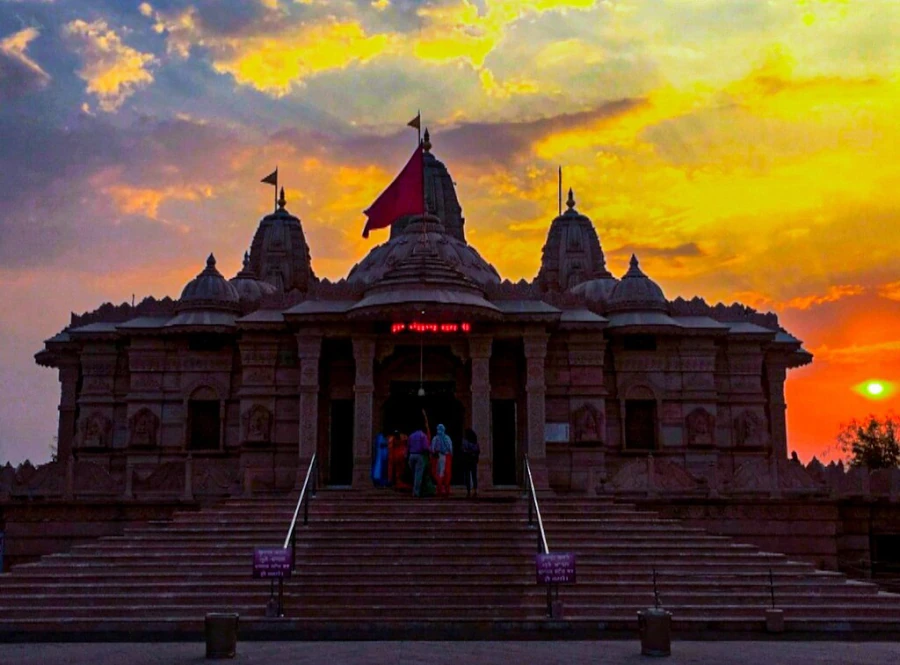
➨ Travel Guide: Things to Do in Akola
⛔ Best Places to Visit
⦿ Shegaon (35 km away): Visit the Gajanan Maharaj Temple, dubbed “Pandharpur of Vidarbha”.
⦿ Katepurna Wildlife Sanctuary: Spot leopards, sloth bears, and 200+ bird species.
⛔ Local Markets & Handicrafts
⦿ Tilak Road: Shop for cotton sarees and terracotta crafts.
⦿ Rathi Nagar: Spices, Puran Poli (Sweet Flatbread), and Brassware.
⛔ Food & Lifestyle
⦿ Must-Try Dishes: Misal Pav (Spicy Curry), Pani Puri, Bhakri-Thecha (Millet Bread with Chili Chutney).
⦿ Agrarian Lifestyle: 70% of locals engage in farming, with cotton auctions being a cultural event.
➤ FAQs
What’s Akola famous for?
Cotton production, Historic Forts, and the Raj Rajeshwar Temple.
Best time to visit Akola?
October–February for cool weather.
How to reach Akola?
Via Akola Junction (rail), NH161 (road), or Nagpur Airport.
➤ Conclusion
Akola is more than a cotton hub—it is a narrative of resilience, where ancient forts stand alongside bustling markets, and agrarian roots fuel contemporary ambitions. Whether exploring its historical depths or savouring its cultural richness, Akola offers a microcosm of Maharashtra’s enduring spirit. For travellers and scholars alike, this city remains a testament to India’s multifaceted heritage.
As the locals here say – Akola is more than a pit stop—it’s a narrative of resilience, culture, and agrarian pride. Whether you’re tracing Mughal forts or savouring street food, this city promises an unforgettable slice of Maharashtra.
➤ Sources
➤ Image Credit
Wikimedia Commons – Narnala Fort
Wikimedia Commons – Akola Maharashtra temple
Loved this guide? Pin it for your Akola adventure or book a cotton-farm tour today! 🌾✨
For more information, you can visit our website: ExploreXP
- Aranya Devi Temple – Arrah, Bihar: Where Mythology Meets Modern Devotion

- Anjaneri Hill – Nashik, Maharashtra: Where Myth Meets Majesty
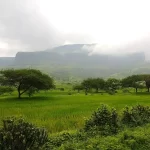
- Anand Sagar, Shegaon, Maharashtra – A Spiritual Oasis Blending Serenity & Adventure
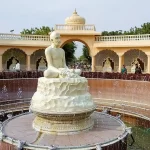
- Aga Khan Palace – Pune’s Monument of Freedom and Legacy
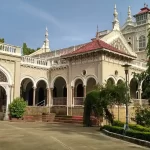
- Attari Sham Singh Railway Station – A Historic Gateway to Punjab’s Heritage
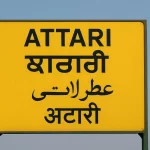
- Amritsar, Punjab: A Timeless Tapestry of Spirituality, History, and Cultural Grandeur
